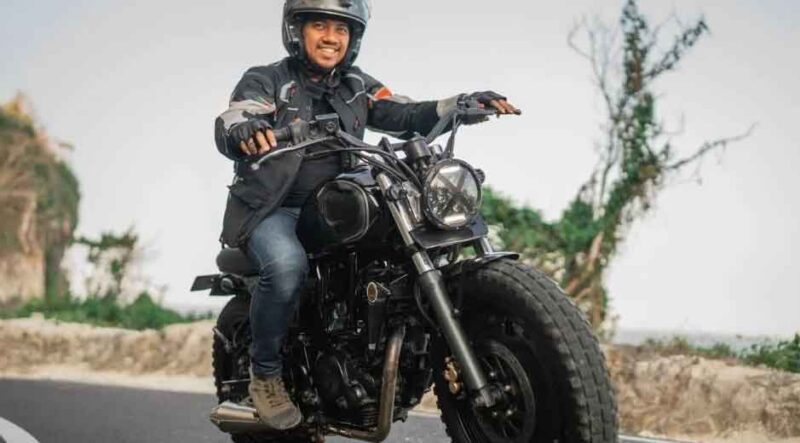Riding a motorcycle comes with a thrill that’s hard to match. But let’s be honest, it’s also more dangerous than driving a car. You’re exposed, you’re less visible, and you have to stay far more alert. That doesn’t mean you should avoid it, but it does mean you need to take safety seriously. A few key habits can make all the difference between a close call and a life-changing accident.
Here are six important ways to lower your risk and stay safer every time you ride.
1. Wear Prescription Motorcycle Glasses
If you wear glasses in everyday life, this one isn’t optional. Riding with poor vision puts you and everyone around you at risk. Regular prescription glasses aren’t made to handle wind, speed, or shifting light on the road. Motorcycle-specific glasses are.
Prescription motorcycle glasses are shaped to block wind from the sides, reduce fogging, and stay put under your helmet. Some come with interchangeable lenses so you’re covered in bright sunlight or low light. And most importantly, they give you a clear, unobstructed view of everything ahead, including road signs, vehicles, and sudden changes in terrain.
Even a split second delay in reaction time can be critical. Good vision is non-negotiable when you’re riding at high speeds.
2. Ride Like You’re Invisible
You might have the right of way. But if another driver doesn’t see you, it doesn’t matter. Too many motorcycle accidents happen because the other vehicle “didn’t see the bike.” That’s the reality riders have to work around.
Always assume cars and trucks don’t see you, especially at intersections, during lane changes, or in stop-and-go traffic. Don’t hang out in blind spots, and don’t expect drivers to signal or check their mirrors.
Position yourself where you’re clearly visible. Use your lights, wear reflective gear if you’re riding at night, and keep your high beam on during the day when necessary. Subtle changes in lane positioning can make a big difference in whether a driver notices you.
3. Don’t Push Through Bad Weather
Getting caught in the rain for five minutes is one thing. Starting a ride when the forecast shows heavy wind, rain, or worse is another. Weather changes the way your tires grip the road. It affects your visibility. It affects how other drivers behave. And it drastically reduces your margin for error.
If it starts pouring, find a safe place to pull over. If it’s foggy, icy, or there’s high wind, it’s better to delay your ride or cancel it altogether. No destination is worth risking your safety for.
Dry pavement and clear skies give you the best conditions to react, brake, and stay in control. That’s what you want when you’re on two wheels.
4. Choose Routes With Safer Road Conditions
Not all roads are created equal. Some are smooth, open, and well-lit. Others are full of potholes, sharp curves, and blind spots. You don’t always get to choose your route, but when you can, pick roads with good surface conditions and clear traffic patterns.
Avoid:
High-traffic interchanges– these are full of sudden merges and confused drivers
Winding backroads with poor lighting– especially dangerous at night or in fog
Gravel or sandy roads– harder to control your bike and easier to slide
Urban areas with unpredictable pedestrians or cyclists– too many variables
If you’re riding for fun rather than commuting, plan your route ahead of time. Even a five-minute detour can sometimes mean a far safer trip.
5. Keep Your Bike in Top Condition
Even the safest rider can be let down by poor maintenance. Tire pressure, brakes, lights, and fluid levels all matter — and they should be checked regularly, not just when something feels off.
It only takes one malfunction for things to go wrong fast. A tire that’s a few PSI too low can affect handling. Worn-out brake pads mean longer stopping time. A busted headlight makes you nearly invisible after dark.
Do a quick walk-around inspection before longer rides. Get used to how your bike sounds and feels, so you notice when something changes. Treat maintenance like part of riding, not just something you get around to once a season.
6. Don’t Ride Tired or Distracted
It’s easy to forget how much focus riding really takes. You’re constantly scanning, judging distances, adjusting speed, and watching for hazards. That kind of attention burns through mental energy, and when you’re tired, your reaction time gets slower.
Distractions don’t always mean phones. You could be riding while angry, upset, or simply not mentally present. That kind of headspace leads to mistakes.
If you’re feeling drained before a ride, take a break, grab water, or postpone it. Never ride just to “push through” a bad day. Clear focus is just as important as the gear you wear.
Take Control of Your Ride
Motorcycles give you freedom and fun, but they also demand more responsibility. Every decision, from your gear to your mindset, plays a part in your safety.
The key takeaway? Don’t rely on others to keep you safe. Take ownership of every ride. Use the right gear, stay alert, and make smart choices about when and how you ride.
Staying safe isn’t about luck. It’s about the habits you build.








